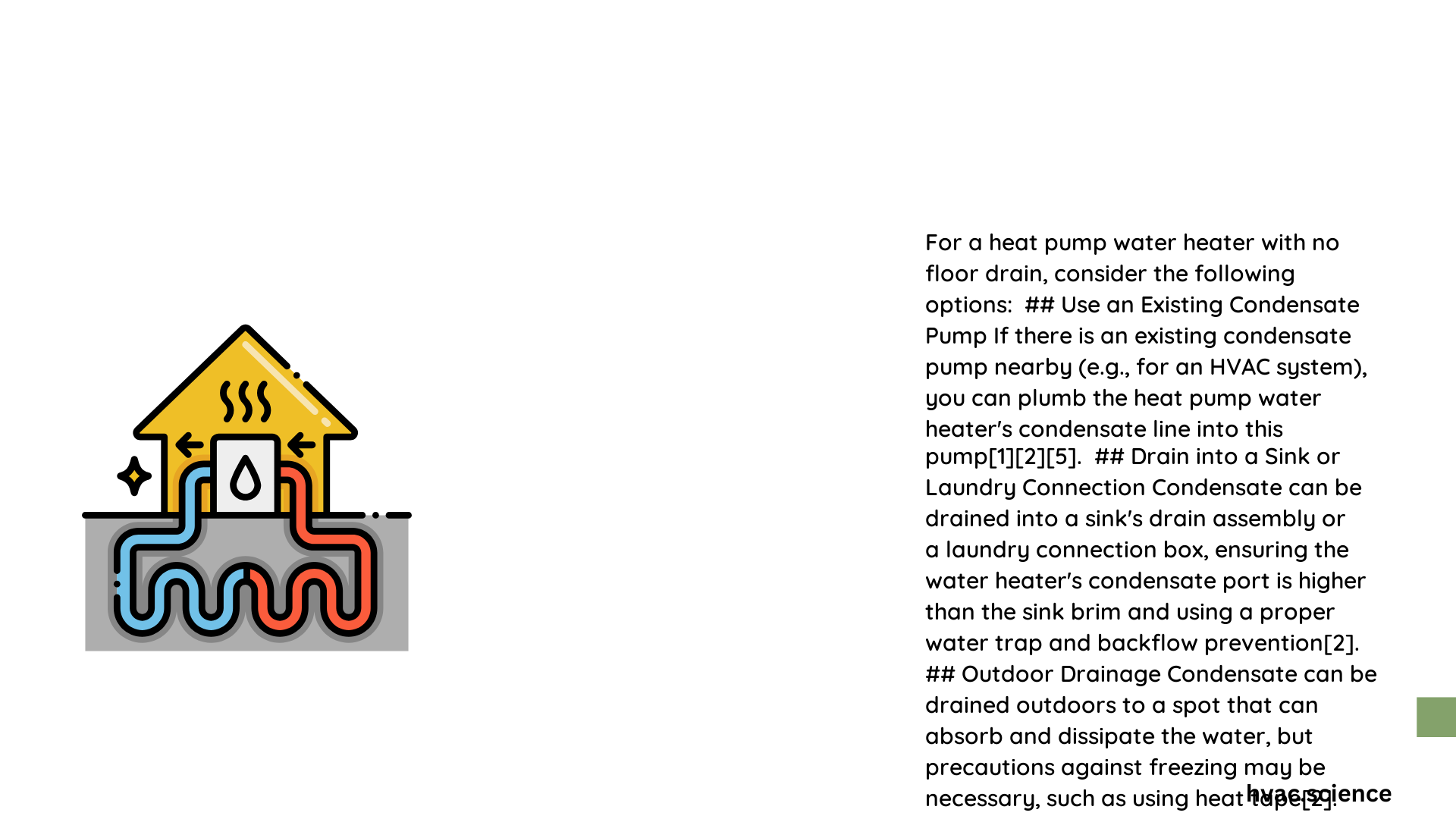Heat pump water heaters present unique installation challenges when no floor drain is available, requiring innovative drainage solutions that protect your home from potential water damage. Homeowners often struggle with managing condensate and finding effective ways to redirect moisture without traditional drainage infrastructure. This comprehensive guide explores practical, cost-effective methods to successfully install and operate a heat pump water heater in spaces lacking direct floor drain access.
What Are the Primary Drainage Challenges?
Heat pump water heaters generate significant condensate during operation, creating potential moisture management issues. Unlike traditional water heaters, these systems produce substantial liquid that must be properly redirected to prevent potential water damage and maintain optimal performance.
Key Drainage Strategies for Heat Pump Water Heater Installation
Drain Pan Solutions
| Drainage Method | Cost | Complexity | Effectiveness |
|---|---|---|---|
| Standard Drain Pan | Low | Easy | Moderate |
| Elevated Drain Pan | Medium | Moderate | High |
| Drain Pan with Condensate Pump | High | Complex | Very High |
Drainage Techniques Without Floor Drain
- Condensate Pump Installation
- Select a pump rated for water heater condensate volume
- Ensure continuous upward slope in drainage line
-
Connect to nearby utility sink or external drainage point
-
Alternative Drainage Options
- Laundry sink connection
- External drainage to landscaped areas
- Remote sump pump system
How to Select the Right Drainage Approach?

When choosing a drainage solution for your heat pump water heater without a floor drain, consider:
- Space Availability: Assess surrounding area for potential drainage routes
- Budget Constraints: Evaluate cost of different drainage methods
- Local Building Codes: Verify compliance with municipal regulations
- Climate Considerations: Account for potential freezing or humidity issues
Efficiency and Performance Optimization
Heat pump water heaters typically offer:
– 50-60% energy savings compared to traditional electric models
– Energy Factor (EF) ratings around 2.0-2.5
– Reduced operational costs
– Enhanced environmental sustainability
What Maintenance Practices Ensure Optimal Performance?
- Regular condensate line inspection
- Annual drainage system cleaning
- Humidity level monitoring
- Professional system evaluation every 2-3 years
Technical Considerations for Successful Installation
- Ventilation Requirements
- Minimum clearance of 1000 cubic feet per unit
- Temperature range between 40-90°F for optimal performance
-
Humidity control crucial for efficiency
-
Drainage System Components
- High-capacity condensate pump
- Corrosion-resistant drainage materials
- Proper insulation to prevent heat loss
Potential Cost Implications
| Installation Component | Estimated Cost Range |
|---|---|
| Drain Pan | $30 – $100 |
| Condensate Pump | $100 – $250 |
| Professional Installation | $200 – $500 |
| Total Potential Investment | $330 – $850 |
Expert Recommendations
- Consult professional HVAC technician
- Obtain multiple installation quotes
- Verify manufacturer-specific drainage requirements
- Consider long-term efficiency over initial installation costs
Conclusion
Successful heat pump water heater installation without a floor drain demands strategic planning, technical knowledge, and adaptable solutions. By understanding drainage challenges and implementing appropriate techniques, homeowners can enjoy efficient, reliable hot water systems.
